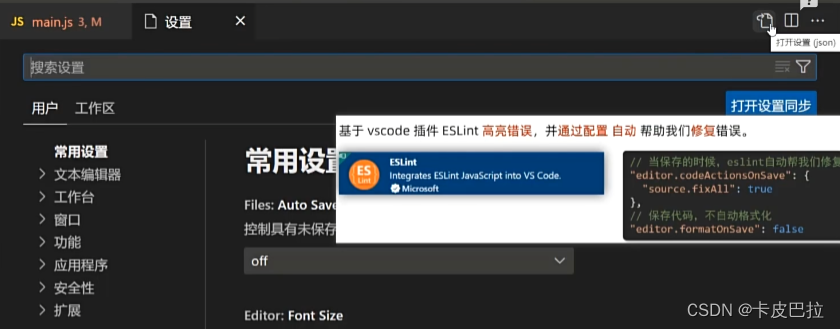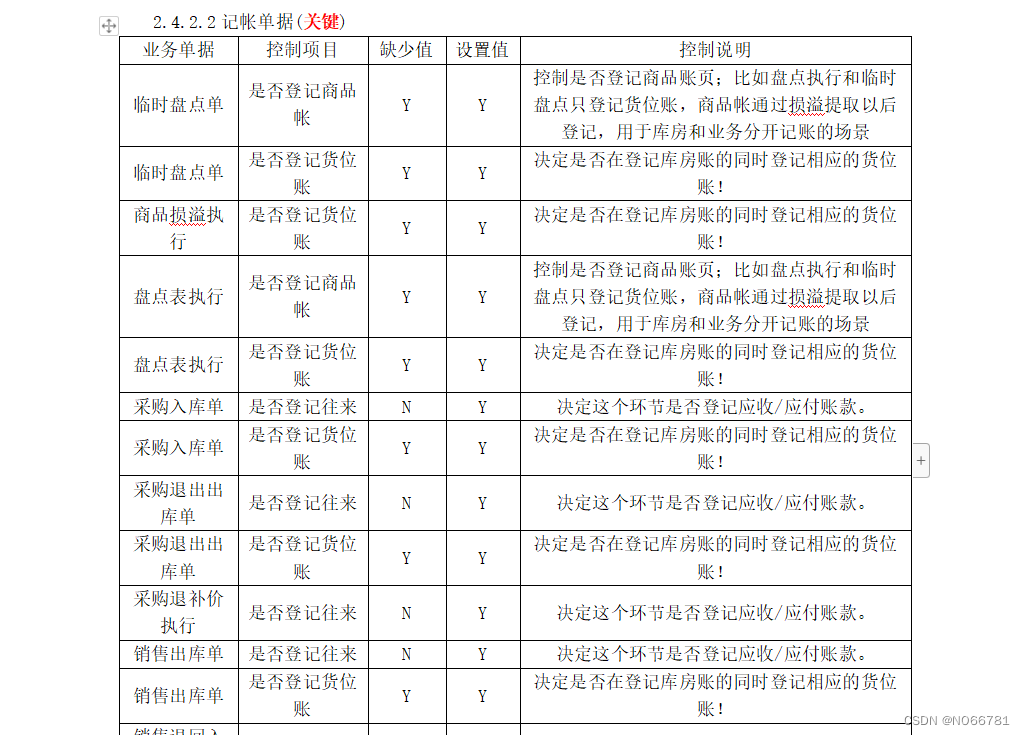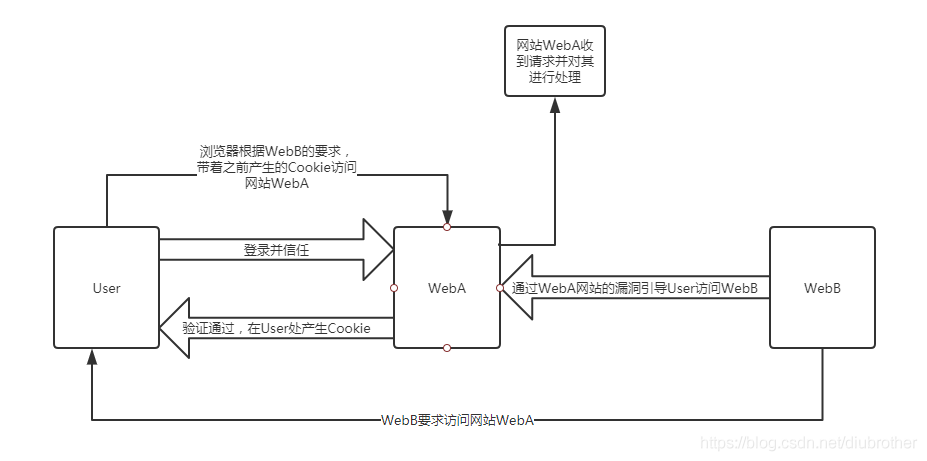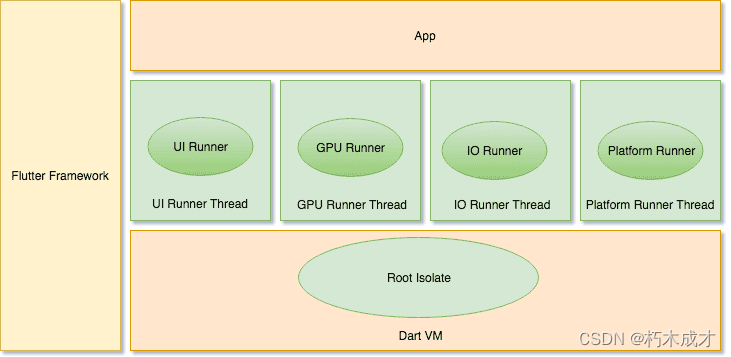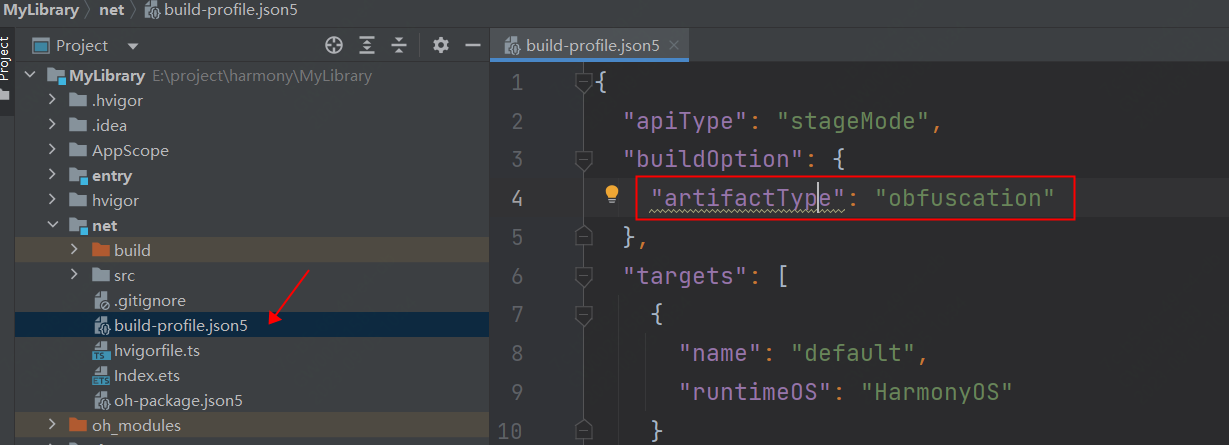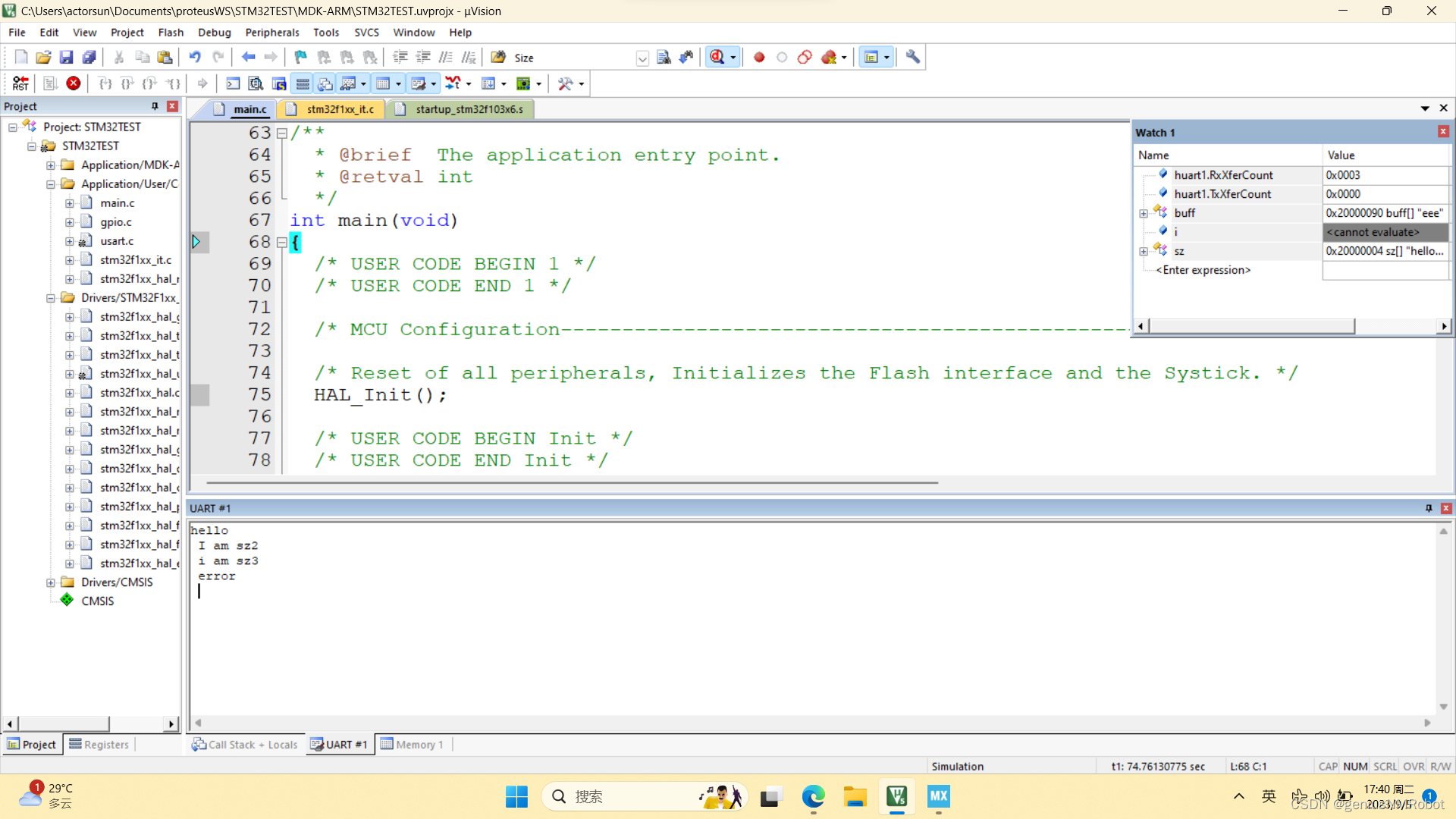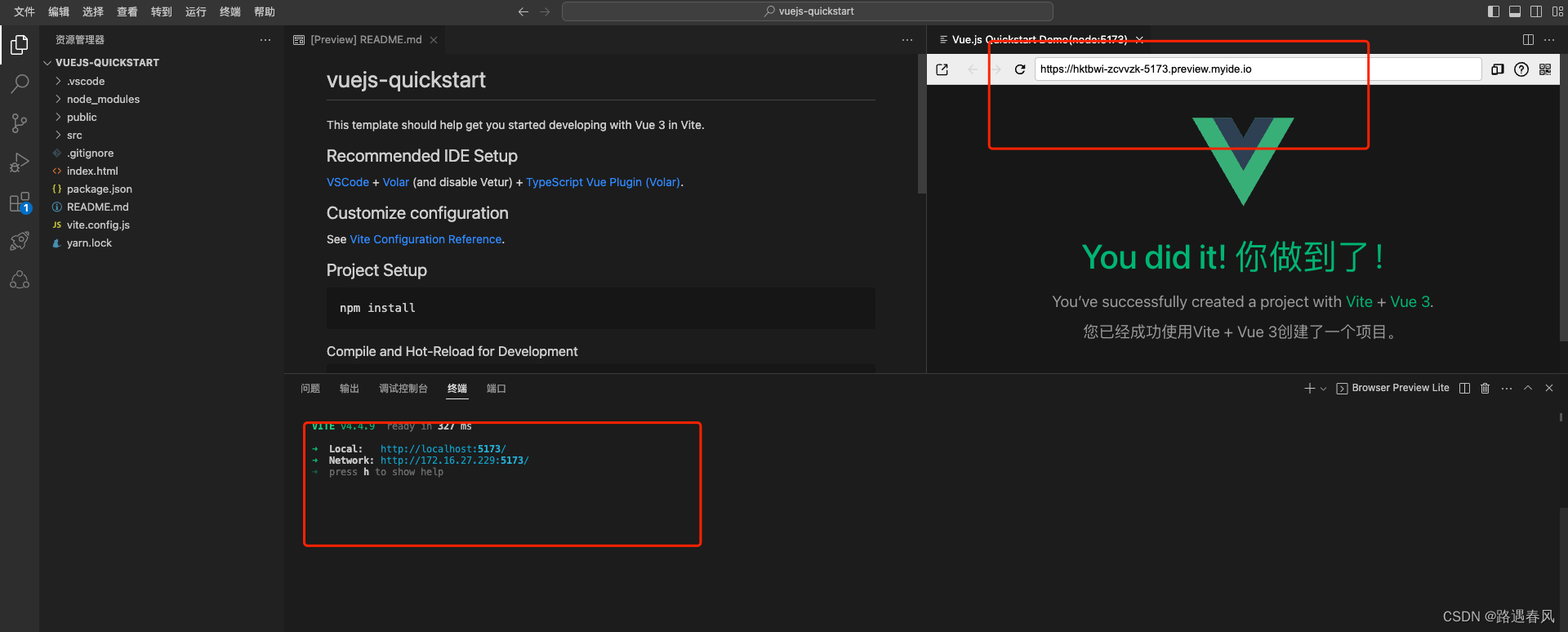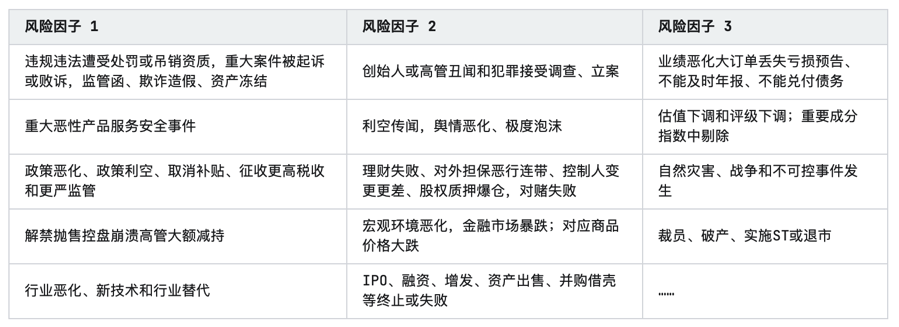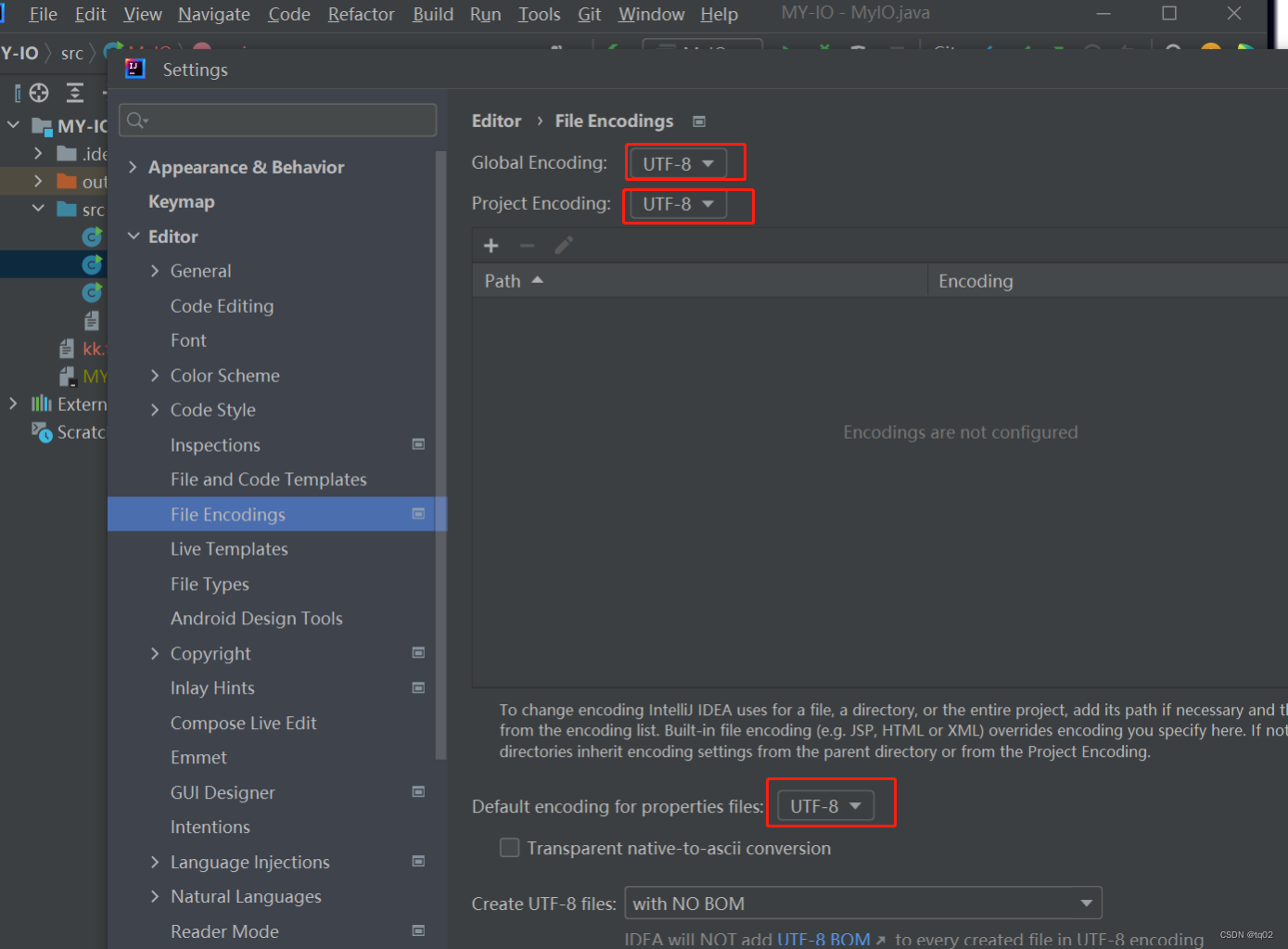Android-Ble蓝牙开发Demo示例–扫描,连接,发送和接收数据,分包解包(附源码) - 简书前言 万物互联的物联网时代的已经来临,ble蓝牙开发在其中扮演着举重若轻的角色。最近刚好闲一点,抽时间梳理下这块的知识点。 涉及ble蓝牙通讯的客户端(开启、扫描、连接、发送...![]() https://www.jianshu.com/p/1586f916f3d0涉及ble蓝牙通讯的客户端(开启、扫描、连接、发送和接收数据、分包解包)和服务端(初始化广播数据、开始广播、配置Services、Server回调操作)整个环节以及一些常见的问题即踩过的一些坑。
https://www.jianshu.com/p/1586f916f3d0涉及ble蓝牙通讯的客户端(开启、扫描、连接、发送和接收数据、分包解包)和服务端(初始化广播数据、开始广播、配置Services、Server回调操作)整个环节以及一些常见的问题即踩过的一些坑。
蓝牙有传统(经典)蓝牙和低功耗蓝牙BLE(Bluetooth Low Energy)之分,两者的开发的API不一样,本文主讲Ble蓝牙开发,传统蓝牙不展开,有需要的可以自行了解。
相对传统蓝牙,BLE低功耗蓝牙,主要特点是快速搜索,快速连接,超低功耗保持连接和数据传输。
ndroid4.3(API Level 18)开始引入BLE的核心功能并提供了相应的 API。应用程序通过这些 API 扫描蓝牙设备、查询 services、读写设备的 characteristics(属性特征)等操作。
BLE蓝牙协议是GATT协议, BLE相关类不多, 全都位于android.bluetooth包和android.bluetooth.le包的几个类:
android.bluetooth.
.BluetoothGattService 包含多个Characteristic(属性特征值), 含有唯一的UUID作为标识
.BluetoothGattCharacteristic 包含单个值和多个Descriptor, 含有唯一的UUID作为标识
.BluetoothGattDescriptor 对Characteristic进行描述, 含有唯一的UUID作为标识
.BluetoothGatt 客户端相关
.BluetoothGattCallback 客户端连接回调
.BluetoothGattServer 服务端相关
.BluetoothGattServerCallback 服务端连接回调
android.bluetooth.le.
.AdvertiseCallback 服务端的广播回调
.AdvertiseData 服务端的广播数据
.AdvertiseSettings 服务端的广播设置
.BluetoothLeAdvertiser 服务端的广播
.BluetoothLeScanner 客户端扫描相关(Android5.0新增)
.ScanCallback 客户端扫描回调
.ScanFilter 客户端扫描过滤
.ScanRecord 客户端扫描结果的广播数据
.ScanResult 客户端扫描结果
.ScanSettings 客户端扫描设置
BLE设备分为两种设备: 客户端(也叫主机/中心设备/Central), 服务端(也叫从机/外围设备/peripheral)
客户端的核心类是 BluetoothGatt
服务端的核心类是 BluetoothGattServer 和 BluetoothLeAdvertiser
BLE数据的核心类是 BluetoothGattCharacteristic 和 BluetoothGattDescriptor
下面详细讲解下客户端和服务端的开发步骤流程
一、BLE客户端开发流程
1、申请权限
安卓手机涉及蓝牙权限问题,蓝牙开发需要在AndroidManifest.xml文件中添加权限声明:
<!-- 蓝牙权限 -->
<uses-permission android:name="android.permission.BLUETOOTH" />
<uses-permission android:name="android.permission.BLUETOOTH_ADMIN" />
为适配安卓6.0以及以上版本需要添加一个模糊定位的权限
<uses-permission android:name="android.permission.ACCESS_COARSE_LOCATION" />
手机权限管理中允许此权限,否则会出现无法搜索到设备的情况;
BLE权限增加了BEL支持检查
(1).在manifest中添加权限
<!-- true 表示手机必须支持BLE,否则无法安装!
这里设为false, 运行后在Activity中检查-->
<uses-feature
android:name="android.hardware.bluetooth_le"
android:required="false" />
(2).在Activity中设置蓝牙
// 检查是否支持BLE蓝牙
if (!getPackageManager().hasSystemFeature(PackageManager.FEATURE_BLUETOOTH_LE)) {
Util.toast(this, "本机不支持低功耗蓝牙!");
finish();
return;
}
2、打开蓝牙
在搜索设备之前需要询问打开手机蓝牙:
//获取系统蓝牙适配器管理类
private BluetoothAdapter mBluetoothAdapter = BluetoothAdapter.getDefaultAdapter();
// 询问打开蓝牙
if (mBluetoothAdapter != null && !mBluetoothAdapter.isEnabled()) {
Intent enableBtIntent = new Intent(BluetoothAdapter.ACTION_REQUEST_ENABLE);
startActivityForResult(enableBtIntent, 1);
}
// 申请打开蓝牙请求的回调
@Override
protected void onActivityResult(int requestCode, int resultCode, Intent data) {
// TODO Auto-generated method stub
super.onActivityResult(requestCode, resultCode, data);
if (requestCode == 1) {
if (resultCode == RESULT_OK) {
Toast.makeText(this, "蓝牙已经开启", Toast.LENGTH_SHORT).show();
} else if (resultCode == RESULT_CANCELED) {
Toast.makeText(this, "没有蓝牙权限", Toast.LENGTH_SHORT).show();
finish();
}
}
}
3、搜索设备
注意: BLE设备地址是动态变化(每隔一段时间都会变化),而经典蓝牙设备是出厂就固定不变了!
BluetoothAdapter bluetoothAdapter = BluetoothAdapter.getDefaultAdapter();
// 下面使用Android5.0新增的扫描API,扫描返回的结果更友好,比如BLE广播数据以前是byte[] scanRecord,而新API帮我们解析成ScanRecord类\
final BluetoothLeScanner bluetoothLeScanner = bluetoothAdapter.getBluetoothLeScanner();
bluetoothLeScanner.startScan(mScanCallback);
mHandler.postDelayed(new Runnable() {
@Override
public void run() {
bluetoothLeScanner.stopScan(mScanCallback); //停止扫描
isScanning = false;
}
}, 3000);
// 扫描结果Callback
private final ScanCallback mScanCallback = new ScanCallback() {
@Override
public void onScanResult(int callbackType, ScanResult result) {、
BluetoothDevice dev = result.getDevice() 获取BLE设备信息
// result.getScanRecord() 获取BLE广播数据
}
};
// 旧API是BluetoothAdapter.startLeScan(LeScanCallback callback)方式扫描BLE蓝牙设备,如下:
mBluetoothAdapter.startLeScan(callback);
private LeScanCallback callback = new LeScanCallback() {
@Override
public void onLeScan(BluetoothDevice device, int arg1, byte[] arg2) {
//device为扫描到的BLE设备
if(device.getName() == "目标设备名称"){
//获取目标设备
targetDevice = device;
}
}
};
4、连接设备
通过扫描BLE设备,根据设备名称区分出目标设备targetDevice,下一步实现与目标设备的连接,在连接设备之前要停止搜索蓝牙;停止搜索一般需要一定的时间来完成,最好调用停止搜索函数之后加以100ms的延时,保证系统能够完全停止搜索蓝牙设备。停止搜索之后启动连接过程;
BLE蓝牙的连接方法相对简单只需调用connectGatt方法;
public BluetoothGatt connectGatt (Context context, boolean autoConnect, BluetoothGattCallback callback);
参数说明
- 返回值 BluetoothGatt: BLE蓝牙连接管理类,主要负责与设备进行通信;
- boolean autoConnect:建议置为false,能够提升连接速度;
- BluetoothGattCallback callback 连接回调,重要参数,BLE通信的核心部分;
5、设备通信
与设备建立连接之后与设备通信,整个通信过程都是在BluetoothGattCallback的异步回调函数中完成;
BluetoothGattCallback中主要回调函数如下:
private BluetoothGattCallback gattCallback = new BluetoothGattCallback() {
@Override
public void onConnectionStateChange(BluetoothGatt gatt, int status,int newState) {
//连接状态改变的Callback
}
@Override
public void onServicesDiscovered(BluetoothGatt gatt, int status) {
//服务发现成功的Callback
}
@Override
public void onCharacteristicWrite(BluetoothGatt gatt,BluetoothGattCharacteristic characteristic, int status) {
//写入Characteristic
}
@Override
public void onCharacteristicRead(BluetoothGatt gatt, BluetoothGattCharacteristic characteristic, int status) {
//读取Characteristic
}
@Override
public void onCharacteristicChanged(BluetoothGatt gatt,BluetoothGattCharacteristic characteristic) {
//通知Characteristic
}
@Override
public void onDescriptorWrite(BluetoothGatt gatt, BluetoothGattDescriptor descriptor, int status) {
//写入Descriptor
}
@Override
public void onDescriptorRead(BluetoothGatt gatt, BluetoothGattDescriptor descriptor, int status) {
//读取Descriptor
}
};
上述几个回调函数是BLE开发中不可缺少的;
6、等待设备连接成功
当调用targetdDevice.connectGatt(context, false, gattCallback)后系统会主动发起与BLE蓝牙设备的连接,若成功连接到设备将回调onConnectionStateChange方法,其处理过程如下:
@Override
public void onConnectionStateChange(BluetoothGatt gatt, int status,int newState) {
if (newState == BluetoothGatt.STATE_CONNECTED) {
Log.e(TAG, "设备连接上 开始扫描服务");
// 连接成功后,开始扫描服务
mBluetoothGatt.discoverServices();
}
if (newState == BluetoothGatt.STATE_DISCONNECTED) {
// 连接断开
/*连接断开后的相应处理*/
}
};
判断newState == BluetoothGatt.STATE_CONNECTED表明此时已经成功连接到设备;
7、开启扫描服务
mBluetoothGatt.discoverServices();
扫描BLE设备服务是安卓系统中关于BLE蓝牙开发的重要一步,一般在设备连接成功后调用,扫描到设备服务后回调onServicesDiscovered()函数,函数原型如下:
@Override
public void onServicesDiscovered(BluetoothGatt gatt, int status) {
private List<BluetoothGattService> servicesList;
//获取服务列表
servicesList = mBluetoothGatt.getServices();
}
- BLE蓝牙协议下数据的通信方式采用BluetoothGattService、BluetoothGattCharacteristic和BluetoothGattDescriptor三个主要的类实现通信;
- BluetoothGattService 简称服务,是构成BLE设备协议栈的组成单位,一个蓝牙设备协议栈一般由一个或者多个BluetoothGattService组成;
- BluetoothGattCharacteristic 简称特征,一个服务包含一个或者多个特征,特征作为数据的基本单元;
- 一个BluetoothGattCharacteristic特征包含一个数据值和附加的关于特征的描述;
- BluetoothGattDescriptor:用于描述特征的类,其同样包含一个value值;
8、获取负责通信的BluetoothGattCharacteristic
BLE蓝牙开发主要有负责通信的BluetoothGattService完成的。当且称为通信服务。通信服务通过硬件工程师提供的UUID获取。获取方式如下:
- BluetoothGattService service = mBluetoothGatt.getService(UUID.fromString("蓝牙模块提供的负责通信UUID字符串"));
- 通信服务中包含负责读写的BluetoothGattCharacteristic,且分别称为notifyCharacteristic和writeCharacteristic。其中notifyCharacteristic负责开启监听,也就是启动收数据的通道,writeCharacteristic负责写入数据;
具体操作方式如下:
BluetoothGattService service = mBluetoothGatt.getService(UUID.fromString("蓝牙模块提供的负责通信服务UUID字符串"));
// 例如形式如:49535343-fe7d-4ae5-8fa9-9fafd205e455
notifyCharacteristic = service.getCharacteristic(UUID.fromString("notify uuid"));
writeCharacteristic = service.getCharacteristic(UUID.fromString("write uuid"));
9、开启监听
开启监听,即建立与设备的通信的首发数据通道,BLE开发中只有当客户端成功开启监听后才能与服务端收发数据。开启监听的方式如下:
mBluetoothGatt.setCharacteristicNotification(notifyCharacteristic, true)
BluetoothGattDescriptor descriptor = characteristic .getDescriptor(UUID.fromString("00002902-0000-1000-8000-00805f9b34fb"));
descriptor.setValue(BluetoothGattDescriptor.ENABLE_NOTIFICATION_VALUE);
//若开启监听成功则会回调BluetoothGattCallback中的onDescriptorWrite()方法,处理方式如下:
@Override
public void onDescriptorWrite(BluetoothGatt gatt, BluetoothGattDescriptor descriptor, int status) {
if (status == BluetoothGatt.GATT_SUCCESS) {
//开启监听成功,可以向设备写入命令了
Log.e(TAG, "开启监听成功");
}
};
10、写入数据
BLE单次写的数据量大小是有限制的,通常是20字节,可以尝试通过requestMTU增大,但不保证能成功。分包写是一种解决方案,需要定义分包协议,假设每个包大小20字节,分两种包,数据包和非数据包。对于数据包,头两个字节表示包的序号,剩下的都填充数据。对于非数据包,主要是发送一些控制信息。
监听成功后通过向 writeCharacteristic写入数据实现与服务端的通信。写入方式如下:
//value为客户端向服务端发送的指令
writeCharacteristic.setValue(value);
mBluetoothGatt.writeCharacteristic(writeCharacteristic)
其中:value一般为Hex格式指令,其内容由设备通信的蓝牙通信协议规定;
11、接收数据
若写入指令成功则回调BluetoothGattCallback中的onCharacteristicWrite()方法,说明将数据已经发送给下位机;
@Override
public void onCharacteristicWrite(BluetoothGatt gatt,
BluetoothGattCharacteristic characteristic, int status) {
if (status == BluetoothGatt.GATT_SUCCESS) {
Log.e(TAG, "发送成功");
}
}
若发送的数据符合通信协议,则服务端会向客户端回复相应的数据。发送的数据通过回调onCharacteristicChanged()方法获取,其处理方式如下:
@Override
public void onCharacteristicChanged(BluetoothGatt gatt, BluetoothGattCharacteristic characteristic) {
// value为设备发送的数据,根据数据协议进行解析
byte[] value = characteristic.getValue();
}
通过向服务端发送指令获取服务端的回复数据,即可完成与设备的通信过程;
12、断开连接
当与设备完成通信之后之后一定要断开与设备的连接。调用以下方法断开与设备的连接:
mBluetoothGatt.disconnect();
mBluetoothGatt.close();
二、BLE服务端开发流程
1、设置广播以及初始化广播数据
//广播设置(必须)
AdvertiseSettings settings = new AdvertiseSettings.Builder()
.setAdvertiseMode(AdvertiseSettings.ADVERTISE_MODE_LOW_LATENCY) //广播模式: 低功耗,平衡,低延迟
.setTxPowerLevel(AdvertiseSettings.ADVERTISE_TX_POWER_HIGH) //发射功率级别: 极低,低,中,高
.setTimeout(0)
.setConnectable(true) //能否连接,广播分为可连接广播和不可连接广播
.build();
//广播数据(必须,广播启动就会发送)
AdvertiseData advertiseData = new AdvertiseData.Builder()
.setIncludeDeviceName(true) //包含蓝牙名称
.setIncludeTxPowerLevel(true) //包含发射功率级别
.addManufacturerData(1, new byte[]{23, 33}) //设备厂商数据,自定义
.build();
//扫描响应数据(可选,当客户端扫描时才发送)
AdvertiseData scanResponse = new AdvertiseData.Builder()
.addManufacturerData(2, new byte[]{66, 66}) //设备厂商数据,自定义
.addServiceUuid(new ParcelUuid(UUID_SERVICE)) //服务UUID
// .addServiceData(new ParcelUuid(UUID_SERVICE), new byte[]{2}) //服务数据,自定义
.build();
2、开始广播
BluetoothManager bluetoothManager = (BluetoothManager) getSystemService(Context.BLUETOOTH_SERVICE);
//BluetoothAdapter bluetoothAdapter = bluetoothManager.getAdapter();
BluetoothAdapter bluetoothAdapter = BluetoothAdapter.getDefaultAdapter();
// ============启动BLE蓝牙广播(广告) ===============
mBluetoothLeAdvertiser = bluetoothAdapter.getBluetoothLeAdvertiser();
mBluetoothLeAdvertiser.startAdvertising(settings, advertiseData, scanResponse, mAdvertiseCallback);
// BLE广播Callback
private AdvertiseCallback mAdvertiseCallback = new AdvertiseCallback() {
@Override
public void onStartSuccess(AdvertiseSettings settingsInEffect) {
logTv("BLE广播开启成功");
}
@Override
public void onStartFailure(int errorCode) {
logTv("BLE广播开启失败,错误码:" + errorCode);
}
};
3、配置Services以及Characteristic
// 注意:必须要开启可连接的BLE广播,其它设备才能发现并连接BLE服务端!
// =============启动BLE蓝牙服务端======================================
BluetoothGattService service = new BluetoothGattService(UUID_SERVICE, BluetoothGattService.SERVICE_TYPE_PRIMARY);
//添加可读+通知characteristic
BluetoothGattCharacteristic characteristicRead = new BluetoothGattCharacteristic(UUID_CHAR_READ_NOTIFY,BluetoothGattCharacteristic.PROPERTY_READ | BluetoothGattCharacteristic.PROPERTY_NOTIFY, BluetoothGattCharacteristic.PERMISSION_READ);
characteristicRead.addDescriptor(new BluetoothGattDescriptor(UUID_DESC_NOTITY, BluetoothGattCharacteristic.PERMISSION_WRITE));
service.addCharacteristic(characteristicRead);
//添加可写characteristic
BluetoothGattCharacteristic characteristicWrite = new BluetoothGattCharacteristic(UUID_CHAR_WRITE, BluetoothGattCharacteristic.PROPERTY_WRITE, BluetoothGattCharacteristic.PERMISSION_WRITE);
service.addCharacteristic(characteristicWrite);
if (bluetoothManager != null){
mBluetoothGattServer = bluetoothManager.openGattServer(this, mBluetoothGattServerCallback);
}
mBluetoothGattServer.addService(service);
4、Server回调以及操作
/**
* 服务事件的回调
*/
private BluetoothGattServerCallback mBluetoothGattServerCallback= new BluetoothGattServerCallback() {
/**
* 1.连接状态发生变化时
*/
@Override
public void onConnectionStateChange(BluetoothDevice device, int status, int newState) {
Log.e(TAG, String.format("1.onConnectionStateChange:device name = %s, address = %s", device.getName(), device.getAddress()));
Log.e(TAG, String.format("1.onConnectionStateChange:status = %s, newState =%s ", status, newState));
}
@Override
public void onServiceAdded(int status, BluetoothGattService service) {
Log.e(TAG, String.format("onServiceAdded:status = %s", status));
}
@Override
public void onCharacteristicReadRequest(BluetoothDevice device, int requestId, int offset, BluetoothGattCharacteristic characteristic) {
Log.e(TAG, String.format("onCharacteristicReadRequest:device name = %s, address = %s", device.getName(), device.getAddress()));
Log.e(TAG, String.format("onCharacteristicReadRequest:requestId = %s, offset = %s", requestId, offset));
mGattServer.sendResponse(device, requestId, BluetoothGatt.GATT_SUCCESS, offset, characteristic.getValue());
}
/**
* 3. onCharacteristicWriteRequest,接收具体的字节
*/
@Override
public void onCharacteristicWriteRequest(BluetoothDevice device, int requestId, BluetoothGattCharacteristic characteristic, boolean preparedWrite, boolean responseNeeded, int offset, byte[] requestBytes) {
Log.e(TAG, String.format("3.onCharacteristicWriteRequest:device name = %s, address = %s", device.getName(), device.getAddress()));
Log.e(TAG, String.format("3.onCharacteristicWriteRequest:requestId = %s, preparedWrite=%s, responseNeeded=%s, offset=%s, value=%s", requestId, preparedWrite, responseNeeded, offset, requestBytes.toString()));
mGattServer.sendResponse(device, requestId, BluetoothGatt.GATT_SUCCESS, offset, requestBytes);
//4.处理响应内容
onResponseToClient(requestBytes, device, requestId, characteristic);
}
/**
* 2.描述被写入时,在这里执行 bluetoothGattServer.sendResponse(device, requestId, BluetoothGatt.GATT_SUCCESS... 收,触发 onCharacteristicWriteRequest
*/
@Override
public void onDescriptorWriteRequest(BluetoothDevice device, int requestId, BluetoothGattDescriptor descriptor, boolean preparedWrite, boolean responseNeeded, int offset, byte[] value) {
Log.e(TAG, String.format("2.onDescriptorWriteRequest:device name = %s, address = %s", device.getName(), device.getAddress()));
Log.e(TAG, String.format("2.onDescriptorWriteRequest:requestId = %s, preparedWrite = %s, responseNeeded = %s, offset = %s, value = %s,", requestId, preparedWrite, responseNeeded, offset, value.toString()));
// now tell the connected device that this was all successfull
mGattServer.sendResponse(device, requestId, BluetoothGatt.GATT_SUCCESS, offset, value);
}
/**
* 5.特征被读取。当回复响应成功后,客户端会读取然后触发本方法
*/
@Override
public void onDescriptorReadRequest(BluetoothDevice device, int requestId, int offset, BluetoothGattDescriptor descriptor) {
Log.e(TAG, String.format("onDescriptorReadRequest:device name = %s, address = %s", device.getName(), device.getAddress()));
Log.e(TAG, String.format("onDescriptorReadRequest:requestId = %s", requestId));
mGattServer.sendResponse(device, requestId, BluetoothGatt.GATT_SUCCESS, offset, null);
}
@Override
public void onNotificationSent(BluetoothDevice device, int status) {
super.onNotificationSent(device, status);
Log.e(TAG, String.format("5.onNotificationSent:device name = %s, address = %s", device.getName(), device.getAddress()));
Log.e(TAG, String.format("5.onNotificationSent:status = %s", status));
}
@Override
public void onMtuChanged(BluetoothDevice device, int mtu) {
super.onMtuChanged(device, mtu);
Log.e(TAG, String.format("onMtuChanged:mtu = %s", mtu));
}
@Override
public void onExecuteWrite(BluetoothDevice device, int requestId, boolean execute) {
super.onExecuteWrite(device, requestId, execute);
Log.e(TAG, String.format("onExecuteWrite:requestId = %s", requestId));
}
};
/**
* 4.处理响应内容
*
* @param reqeustBytes
* @param device
* @param requestId
* @param characteristic
*/
private void onResponseToClient(byte[] reqeustBytes, BluetoothDevice device, int requestId, BluetoothGattCharacteristic characteristic) {
Log.e(TAG, String.format("4.onResponseToClient:device name = %s, address = %s", device.getName(), device.getAddress()));
Log.e(TAG, String.format("4.onResponseToClient:requestId = %s", requestId));
Log.e(TAG, "4.收到:");
String str = new String(reqeustBytes) + " hello>";
characteristicRead.setValue(str.getBytes());
mGattServer.notifyCharacteristicChanged(device, characteristicRead, false);
Log.i(TAG, "4.响应:" + str);
MainActivity.handler.obtainMessage(MainActivity.DEVICE, new String(reqeustBytes)).sendToTarget();
}
三、源码下载
源码上传在CSDN上了,有需要的可以借鉴。
=====> Android蓝牙Ble通讯Demo示例源码–扫描,连接,发送和接收数据,分包解包
四、蓝牙操作的注意事项
1、如何避免ble蓝牙连接出现133错误?
- Android 连接外围设备的数量有限,当不需要连接蓝牙设备的时候,必须调用 BluetoothGatt#close 方法释放资源;
- 蓝牙 API 连接蓝牙设备的超时时间大概在 20s 左右,具体时间看系统实现。有时候某些设备进行蓝牙连接的时间会很长,大概十多秒。如果自己手动设置了连接超时时间在某些设备上可能会导致接下来几次的连接尝试都会在 BluetoothGattCallback#onConnectionStateChange 返回 state == 133;
- 能否避免android设备与ble设备连接/断开时上报的133这类错误?
1、在连接失败或者断开连接之后,调用 close 并刷新缓存
2、尽量不要在startLeScan的时候尝试连接,先stopLeScan后再去连
3、对同一设备断开后再次连接(连接失败重连),哪怕调用完close,需要等待一段时间(400毫秒试了1次,结果不 行;1000毫秒则再没出现过问题)后再去connectGatt
4、可以在连接前都startLeScan一下,成功率要高一点
2、单次写的数据大小有20字节限制,如何发送长数据?
BLE单次写的数据量大小是有限制的,通常是20字节,可以尝试通过requestMTU增大,但不保证能成功。分包写是一种解决方案,需要定义分包协议,假设每个包大小20字节,分两种包,数据包和非数据包。对于数据包,头两个字节表示包的序号,剩下的都填充数据。对于非数据包,主要是发送一些控制信息。
总体流程如下:
1、定义通讯协议,如下(这里只是个举例,可以根据项目需求扩展)
| 消息号(1个字节) | 功能(1个字节) | 子功能(1个字节) | 数据长度(2个字节) | 数据内容(N个字节) | CRC校验(1个字节) |
|---|---|---|---|---|---|
| 01 | 01 | 01 | 0000 | -- | 2D |
2、封装通用发送数据接口(拆包)
该接口根据会发送数据内容按最大字节数拆分(一般20字节)放入队列,拆分完后,依次从队列里取出发送
3、封装通用接收数据接口(组包)
该接口根据从接收的数据按协议里的定义解析数据长度判读是否完整包,不是的话把每条消息累加起来
4、解析完整的数据包,进行业务逻辑处理
5、协议还可以引入加密解密,需要注意的选算法参数的时候,加密后的长度最好跟原数据长度一致,这样不会影响拆包组包
3、在Android不同版本或不同的手机扫描不到蓝牙设备
一般都是Android版本适配以及不同ROM机型(小米/红米、华为/荣耀等)(EMUI、MIUI、ColorOS等)的权限问题
4、其它
- 蓝牙的写入操作, 读取操作必须序列化进行. 写入数据和读取数据是不能同时进行的, 如果调用了写入数据的方法, 马上调用又调用写入数据或者读取数据的方法,第二次调用的方法会立即返回 false, 代表当前无法进行操作;

